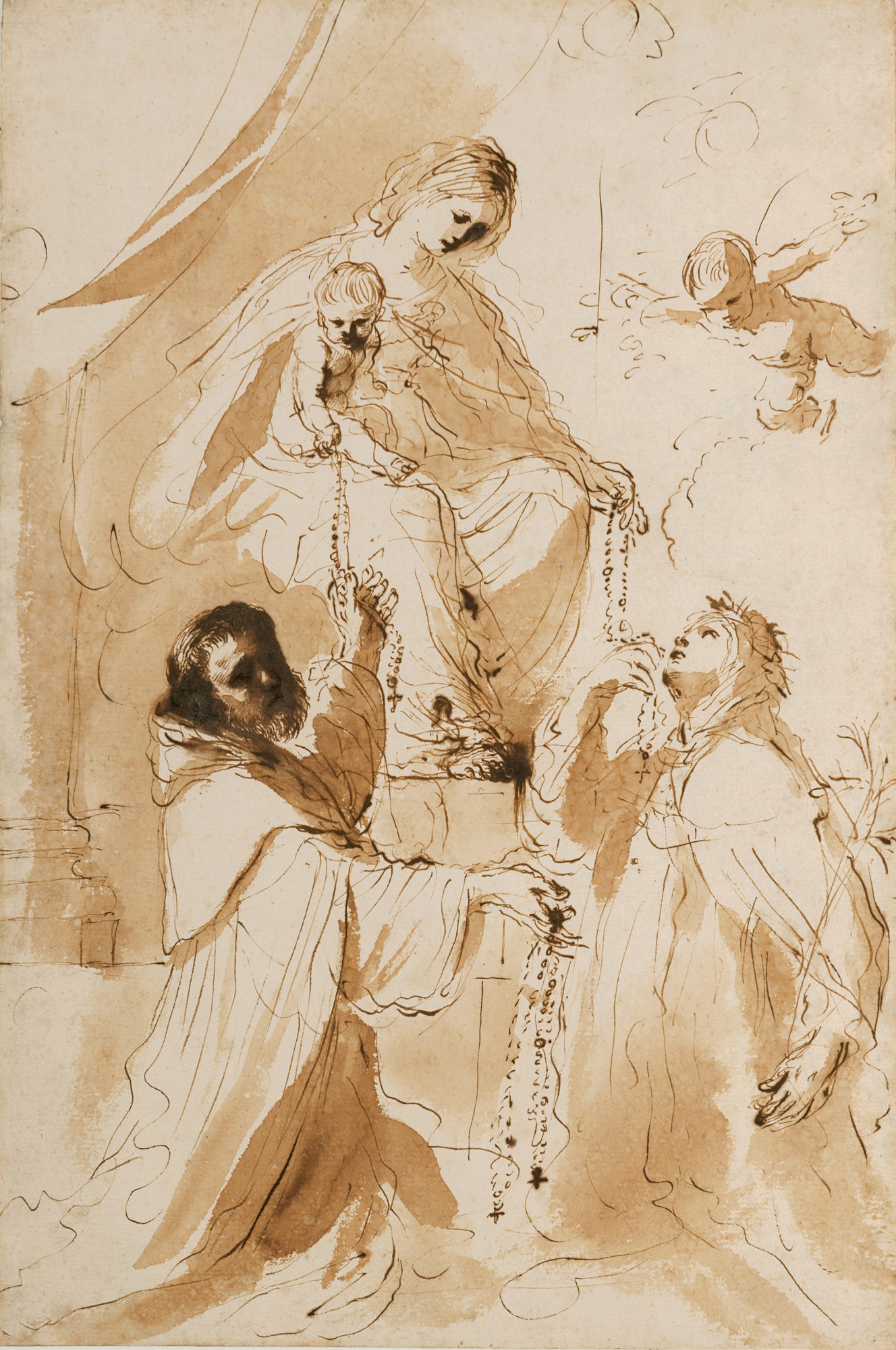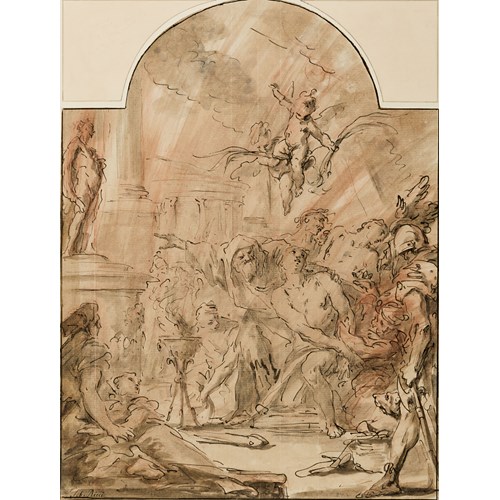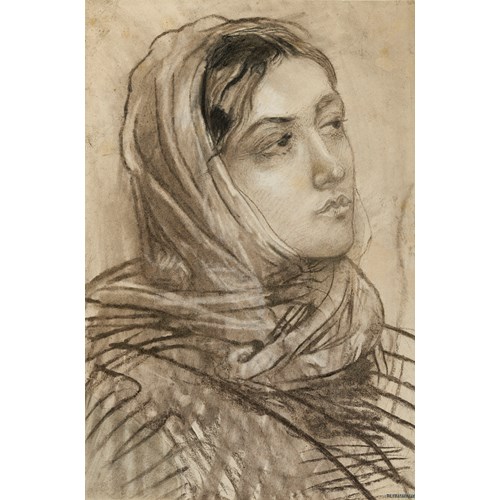Giovanni Francesco Barbieri GUERCINO
The Virgin of the Rosary with Saints Dominic and Catherine of Siena
Another pen and ink compositional drawing by Guercino for the Osimo altarpiece, formerly in the collection of Queen Christina of Sweden, is today in the Teyler Museum in Haarlem, while a third, drawn in red chalk and highly finished, is in the collection of the Dukes of Devonshire at Chatsworth. Among preparatory studies for individual figures in the painting is a pen and ink study for the Virgin in the Royal Collection at Windsor Castle and a pen drawing for two of the putti at the top right of the composition, which appeared at auction in London in 1974. Another study for the putti in the upper half of the altarpiece, drawn in red chalk, was formerly with Stephen Ongpin Fine Art and was recently acquired by the National Trust for The Vyne in Basingstoke, Hampshire. Finally, an untraced pen and ink drawing of the Virgin and Child, formerly in the collection of the Baron de Malaussena and sold at auction in Amsterdam in 1927, has been tentatively related to the Osimo canvas.
Some elements of the present sheet are also found in a slightly earlier altarpiece, with a different composition, of the same subject of The Virgin of the Rosary with Saints Dominic and Catherine of Siena, painted for the Compagnia del Rosario in Turin and placed in the church of San Domenico there in 1637. As is sometimes the case with Guercino’s compositional drawings, some confusion exists in determining which of the artist’s studies of this subject are related to one or the other of the two painted versions of The Virgin of the Rosary with Saints Dominic and Catherine of Siena; the Turin painting of 1637 or the Osimo altarpiece of a few years later. Compositional studies by Guercino for the Turin painting include a red chalk drawing in the British Museum and a pen and ink sheet in the Pierpont Morgan Library in New York. The pose of Saint Catherine in the present sheet, however, is close to that in the Morgan drawing, which has in the past been regarded as a preparatory study for the Osimo canvas.
A later copy of the present sheet by the 18th century Florentine engraver Francesco Bartolozzi (1727-1815), in the Albertina in Vienna, is part of a group of around fifteen copies of Guercino drawings by Bartolozzi in that collection. In the late 1750s and early 1760s, Bartolozzi seems to have had access to the large corpus of Guercino drawings in the Casa Gennari and made drawn copies after several of them; this would suggest the likelihood that the present sheet has a Casa Gennari provenance.
The present sheet bears the collector’s mark of the 20th century French art dealer Charles Férault (1877-1957), who began acquiring drawings from around 1910 onwards. Férault’s mark was applied only to those drawings - mostly by French and Italian artists - in his own collection, and not works held as stock.
Provenance: Probably among the contents of the artist’s studio at the time of his death, and by descent to his nephews, Benedetto and Cesare Gennari, the ‘Casa Gennari’, Bologna
Thence by descent to Carlo Gennari, Bologna and probably sold in the second half of the 18th century
Charles Férault, Paris and Biarritz (Lugt 2793a)
Private collection, France.
Literature: Nicholas Turner and Carol Plazzotta, Drawings by Guercino from British Collections, exhibition catalogue, London, 1991, p.138, under no.113 (as lost); Sir Denis Mahon, Giovanni Francesco Barbieri il Guercino 1591-1666: Disegni, exhibition catalogue, Bologna, 1991 [pub. 1992], p.158, under no.90 and p.176, under no.110 (as lost); Veronika Birke and Janine Kertész, Die Italienischen Zeichnungen der Albertina: Generalverzeichnis, Vol.II, Vienna, 1994, p.743, under Inv.1377 (as lost); John Marciari, Guercino: Virtuoso Draftsman, exhibition catalogue, Morgan Library and Museum, New York, 2019-2020, p.78, under no.20 (as lost, and preparatory for the 1637 Turin painting).
More artworks from the Gallery






_T637286174875569941.jpg?width=500&height=500&mode=pad&scale=both&qlt=90&format=jpg)


